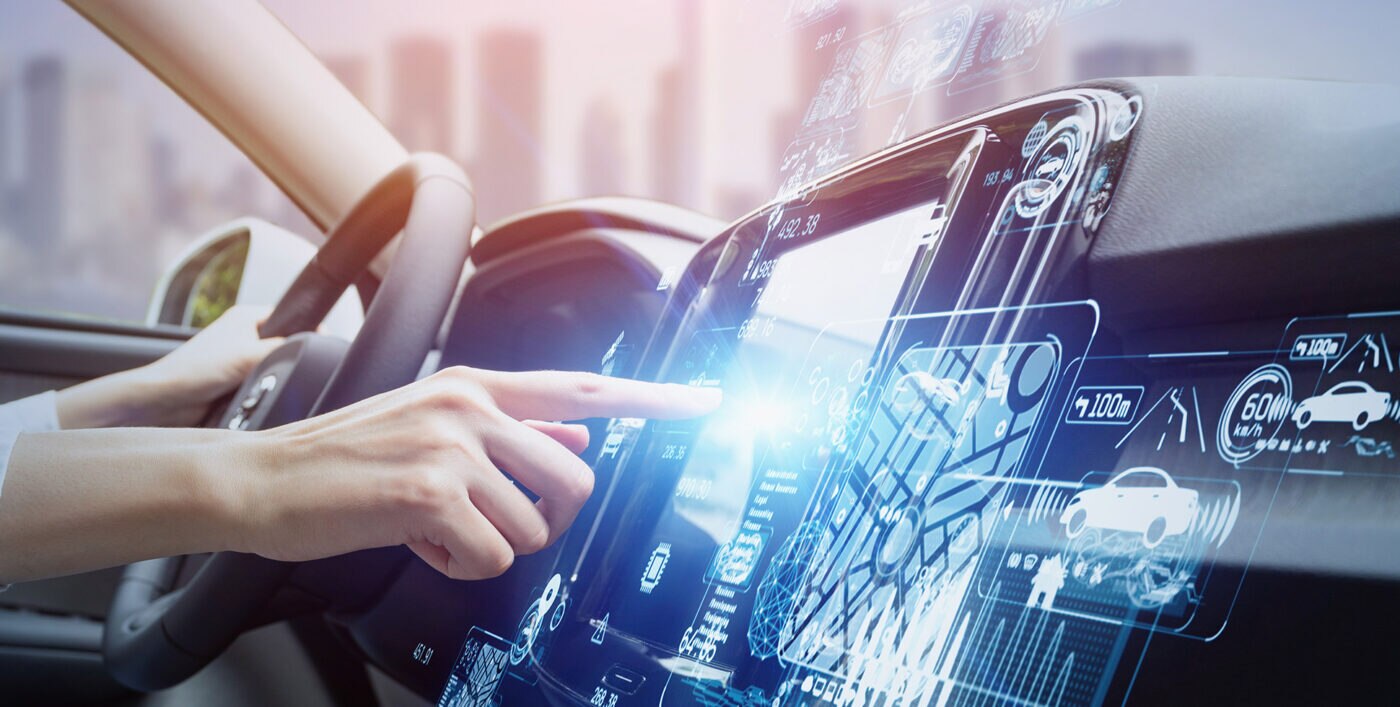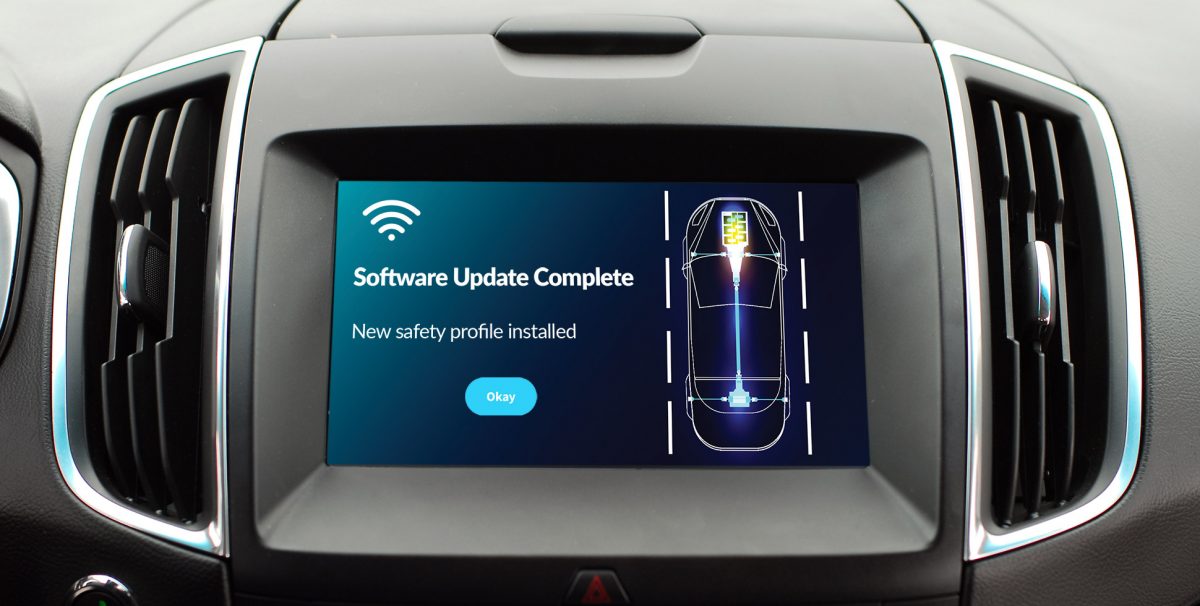Software-Defined Vehicles Need Hardware That Goes the Distance

The software-defined vehicle has put the lifelong mantra of the automotive industry – a car is never better than when it is first sold – firmly to bed. Today, new players in the automotive market are disrupting the industry with the promise to new vehicle buyers of better and better experiences further down the road.
The draw of the software-defined vehicle is crystal clear. Consumers have seen how easily their smart devices can be upgraded, apps updated and faults fixed over-the-air. Now, with growing consumer interest in higher levels of autonomous driving, a concerted move towards electrified powertrains and infotainment technologies delivering a smartphone experience in-car, the idea of taking their vehicle to be hooked up to a dealership’s computer to gain diagnostic information or update software and settings is becoming increasingly primitive.
The software-defined vehicle promises a far more polished, rewarding experience of car ownership. Consumers will get in their car to drive to work and, just like the software updates they’re used to on their smartphones, they’ll receive a notification that the steering system has been upgraded to give more precise handling, the advanced driver-assistance system (ADAS) has a new capability to aid their highway driving or that their vehicle’s range has just been increased based on analysis of thousands of hours of battery cycles.
Or perhaps they’ll be given or offered an entirely new feature that was never part of their original purchase decision yet one they’ll grow to rely upon, cementing their brand loyalty – at least until another manufacturer implements a superior solution.
For carmakers, differentiation of vehicles will move from generational upgrades or point-of-sale choices over engine options and infotainment systems to a need to stay ahead of the curve throughout a vehicle’s life.
Accolades like “safest car of 20xx” will become a daily contest as car manufacturers tweak millions of lines of code in a bid to deliver a safer, more efficient and more enjoyable experience than their competitors.
But while a software-defined vehicle may be updated regularly, its base hardware – the sensors, compute modules, data buses and other technologies that the car has when it leaves the forecourt – are unlikely to change. This poses an interesting challenge: how do we deliver a hardware platform that has the compute capability, flexibility and capacity to handle complex use cases that may not even exist yet?
Drawing comparisons: Software defined vehicles vs mid-2000s cellphones
It’s a challenge Arm is fully invested in solving. And as a point of reference, we can learn a lot from the similar transition the cellphone industry went through in the mid-2000s. Until then, a cellphone’s hardware and software were wedded on the production line, with software only updated (often via mass recall) if a significant bug was identified.
It meant that annual cellphone upgrades were big business, as just as with trading in your car for the latest model the only way to access new features and enhancements was to replace your handset.
Smartphones changed this dynamic by decoupling hardware and software. The smartphone became a hardware platform upon which manufacturers could create bespoke versions of the operating system and deliver updates over-the-air (OTA) while developers could build new applications.
Compute performance in smartphones has also grown exponentially in recent years, as new iterations of Arm technology enable ever-greater performance within a limited thermal envelope and needs for increased on-time without recharging.
It means that smartphones designed and built three or four years ago remain highly capable devices today. Market research platform Statista predicts that the average lifespan of a smartphone will increase from 2.58 years in 2014 to 3.77 years in 2024.
Managing a longer lifespan in software defined vehicles
When it comes to the car, though, 3.77 years doesn’t quite cut it. It’s not unusual to see cars on the road decades after they were built, and the software-defined vehicle of the future will benefit from many manufacturing advancements. Fewer moving parts that are more easily replaced, reduced wear on the powertrain, chassis and suspension due to ADAS safety features and batteries designed for hundreds of thousands of miles of trouble-free driving all feature. One Chinese car battery-maker said last year that it was ready to manufacture a battery capable of powering a vehicle for 1.2 million miles or 16 years.
Of course, we’re not excluding all the other ways a car could be confined to the scrapyard: rust hasn’t gone away. But under optimal conditions, the car of tomorrow is likely to significantly outlast the car of yesterday. Which means that hardware platform built into the software-defined vehicle at point of production needs to be capable of delivering untold new safety, security and functionality benefits in a decade or more’s time.
Features as software services

While the value that the software-defined vehicle is clear, we don’t need to dig down far to see the technical challenges.
If a vehicle model is offered as new with hundreds of optional features on top of a long list of compulsory features designed to meet the regulatory demands of different regions, the number of possible variants proliferates exponentially. We need a methodology for developing, testing and delivering features at massive scale, in such a way that interference and interdependence is minimized. Fortunately, the Cloud Native development paradigm has a solution for this in the form of the services-oriented model.
This is a significant change to the traditional automotive development model carmakers have been used to. Traditionally each electronic control unit (ECU) in the car has its own carefully coded software stack, often having gone through a rigorous safety assessment for both hardware and software. Now, the hardware architecture of the car is changing with the introduction of domain controllers and zonal controllers, often built on more powerful microprocessors capable of running multiple functions within their domain or zone.
These powerful processors are now capable of supporting the services-oriented model, where a continuous integration and continuous delivery (CI/CD) methodology allows for software-driven innovation to be easily provided to vehicle owners, keeping their vehicles fresh with new features and functions.
There are also some additional complexities to address such as functional safety, real-time and deterministic behavior – parameters that do not factor into the development of devices like smartphones or servers.
Future-proof hardware built for software defined vehicles
It is a certainty that the software-defined vehicle will require a large ecosystem to support it, including commercial and open-source software providers, application developers, cloud service providers, tools and services.
The challenge of revolutionizing the automotive industry and enabling continuous innovation is firmly in the sights of Arm and its partners, building on years of innovation within the automotive, IoT, cloud and mobile device market.
The Arm ecosystem is ready to tackle the challenge of the software-defined vehicle and is already gearing up to support the development of today’s vehicles and tomorrow’s upgrades. Arm’s family of Automotive CPUs, GPUs and ISPs offers the required performance alongside features to facilitate functional safety and virtualization, enabling workload isolation and a cloud-like experience for automotive software developers.
Arm Enables the Software-Defined Vehicle
Arm’s automotive product portfolio delivers the performance required to power the software-defined vehicle today and into the future.
Any re-use permitted for informational and non-commercial or personal use only.












